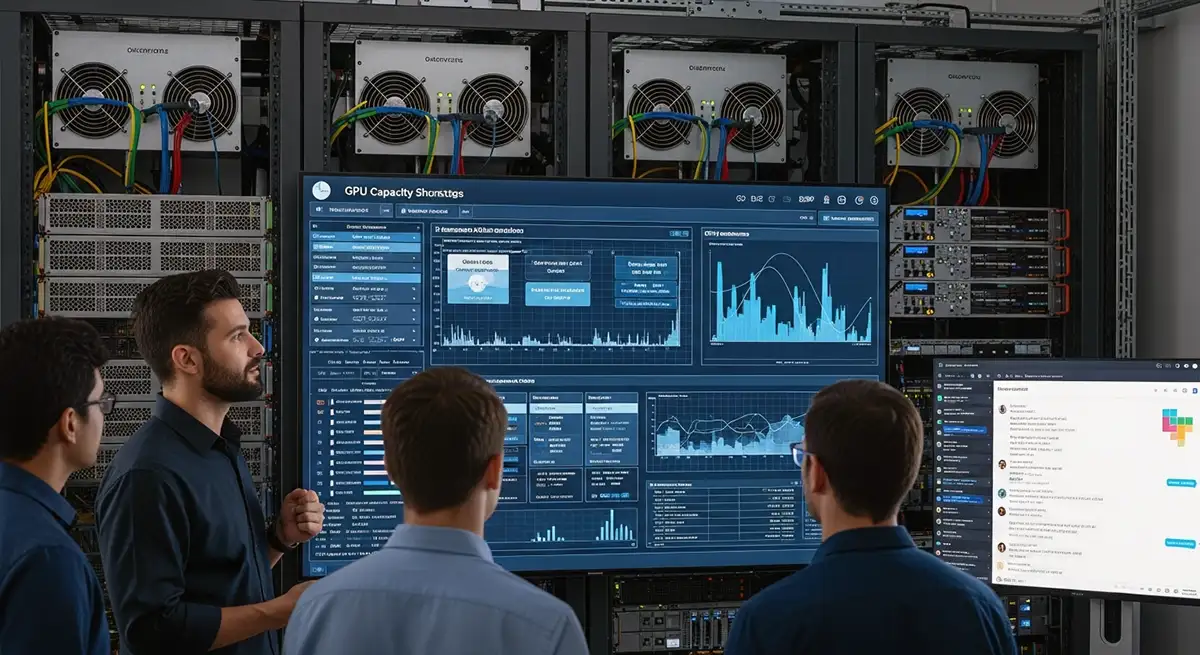
AI Compute Shortages: Insights for 2025 and Beyond
In the rapidly evolving landscape of technology, where artificial intelligence (AI) serves as a cornerstone for innovation, the concept of AI compute shortages has emerged as a critical issue. As organizations increasingly rely on AI for strategic advantages, understanding the dynamics of compute shortages becomes essential for future planning and development. This article delves into the nuances of AI compute shortages, their implications, benefits, and potential strategies for mitigation, especially as we look forward to 2025 and beyond.
Understanding AI Compute Shortages
What is AI Compute Shortages?
AI compute shortages refer to the gap between the demand for computational resources in AI applications and the availability of those resources. As AI models grow in complexity and size, they require substantial computational power, often surpassing the capabilities of current hardware infrastructure. This scenario can lead to bottlenecks in AI development, causing delays in project timelines and limiting the potential of AI applications across various sectors.
Factors Contributing to AI Compute Shortages
Several factors contribute to the rising issue of AI compute shortages. Firstly, the exponential growth in data generation necessitates more powerful computational capabilities. The increasing reliance on machine learning and deep learning algorithms, which require vast amounts of data to train effectively, further exacerbates this demand. Additionally, the supply chain constraints in semiconductor manufacturing, coupled with geopolitical tensions, have resulted in limited availability of high-performance computing chips. These factors collectively create a scenario where the demand for AI compute resources far exceeds supply, highlighting the urgency for organizations to address these shortages proactively.
The Impact of AI Compute Shortages
Effects on AI Development and Innovation
The immediate impact of AI compute shortages is felt in the realm of innovation. As organizations encounter compute limitations, the pace of AI research and development slows down. This stagnation can hinder advancements in critical areas such as natural language processing, computer vision, and autonomous systems. Moreover, companies may find themselves unable to deploy AI solutions that could enhance operational efficiency, customer experience, or product offerings. Consequently, industries that fail to address compute shortages risk falling behind competitors who can leverage AI more effectively.
Economic Implications of AI Compute Shortages
Beyond the confines of individual organizations, AI compute shortages pose broader economic implications. The inability to optimize AI capabilities can lead to decreased productivity across sectors, stifling economic growth. For instance, industries that depend heavily on AI-driven analytics may experience losses due to delayed insights or inadequate solutions. Furthermore, the resulting inefficiencies can translate into increased costs for businesses, affecting their bottom line and overall competitiveness in the market.
Benefits of AI Compute Shortages
Driving Efficiency in Resource Allocation
While it may seem counterintuitive, AI compute shortages can inadvertently drive efficiency in resource allocation. As organizations grapple with limited computational resources, they are compelled to prioritize projects that deliver the highest value. This shift encourages a more strategic approach to AI implementation, where businesses focus on high-impact initiatives rather than spreading resources too thinly across multiple low-priority projects. In this way, compute shortages can catalyze a more disciplined and effective use of resources.
Encouraging Innovation in AI Infrastructure
AI compute shortages can also spur innovation in infrastructure development. Organizations are increasingly exploring alternative computing solutions, such as edge computing and cloud-based services, to alleviate compute constraints. This exploration often leads to the adoption of novel technologies and architectures that improve overall efficiency and performance. As companies innovate to meet their AI compute needs, they may discover new methodologies and tools that enhance their capabilities beyond traditional approaches.
How to Implement Strategies to Mitigate AI Compute Shortages
Scaling and Optimizing Existing Resources
To navigate the challenges posed by AI compute shortages, organizations must focus on scaling and optimizing their existing resources. This can involve evaluating current hardware and software setups to identify inefficiencies and potential upgrades. By leveraging techniques such as model compression and quantization, organizations can reduce the computational burden of AI models without sacrificing performance. Moreover, adopting hybrid computational strategies that combine on-premises resources with cloud solutions can provide the flexibility needed to address fluctuating demands.
Investment in Alternative Computing Solutions
In addition to optimizing existing resources, investing in alternative computing solutions is crucial for mitigating AI compute shortages. As the market for AI accelerates, organizations should explore partnerships with cloud service providers that specialize in AI workloads. These partnerships can offer scalable solutions that adapt to the organization's compute needs. Additionally, exploring emerging technologies such as quantum computing presents an exciting avenue for future-proofing AI capabilities. By staying ahead of the curve, organizations can position themselves to leverage the latest advancements in compute technology.
Best Practices for Navigating AI Compute Shortages
Collaborative Approaches to Resource Sharing
A collaborative approach can be highly effective in addressing AI compute shortages. Organizations can engage in resource-sharing initiatives, pooling their computational resources to tackle common challenges. This collaboration can occur within industry consortia or research partnerships, enabling participants to share best practices and insights while maximizing compute potential. By working together, organizations can alleviate the burden of compute shortages and foster a more cooperative environment for AI development.
Prioritizing Projects Based on Compute Requirements
As compute resources become increasingly constrained, organizations must prioritize projects based on their compute requirements. This strategic selection process allows businesses to focus on high-value projects that align with their overall objectives. By evaluating the potential return on investment for each AI initiative, organizations can allocate their resources more effectively, ensuring that they derive maximum value from their computational investments.
Real-World Examples of AI Compute Shortages
Case Study: Industry Responses to Compute Constraints
Several industries have faced significant challenges due to AI compute shortages. The automotive sector, for instance, has encountered delays in the development of autonomous driving technologies due to insufficient computational resources. In response, companies have adopted collaborative approaches, forming alliances to share compute resources and accelerate development timelines. These partnerships not only alleviate compute constraints but also foster innovation through shared expertise.
Lessons Learned from AI Compute Shortages in Different Sectors
Various sectors have encountered AI compute shortages, each yielding valuable lessons. In healthcare, for example, the demand for AI-driven diagnostic tools surged during the COVID-19 pandemic, leading to significant compute constraints. Organizations discovered that prioritizing projects based on urgency and impact allowed them to optimize available resources effectively. These experiences underscore the importance of adaptability and strategic planning in the face of compute shortages.
Future Outlook: AI Compute Shortages in 2025 and Beyond
Predictions for AI Compute Demand
As we look ahead to 2025, the demand for AI compute resources is expected to escalate further. The proliferation of AI applications across industries, coupled with advancements in machine learning techniques, will likely drive an unprecedented need for computational power. Organizations must prepare to navigate this growing demand by implementing proactive strategies that anticipate future compute needs.
Emerging Technologies to Alleviate Compute Shortages
To counteract the looming challenges of AI compute shortages, several emerging technologies hold promise. Advancements in hardware, such as specialized AI chips and neuromorphic computing, could significantly enhance computational efficiency. Additionally, developments in distributed computing and cloud-native AI frameworks may provide scalable solutions that adapt to varying workloads. Organizations that invest in these technologies will be better positioned to address compute shortages and leverage AI for strategic advantage.
Conclusion: Preparing for a Future with AI Compute Shortages
In conclusion, AI compute shortages represent a multifaceted challenge that organizations must confront as they navigate the evolving landscape of artificial intelligence. While these shortages pose significant barriers to innovation and economic growth, they also offer opportunities for efficiency and strategic resource allocation. By implementing best practices, investing in alternative solutions, and fostering collaboration, businesses can mitigate the impact of compute shortages and position themselves for success in 2025 and beyond.
As the demand for AI continues to surge, organizations that proactively address AI compute shortages will not only survive but thrive in a competitive landscape. Understanding and preparing for these challenges is essential for realizing the full potential of AI technology in the future. For further insights into future trends in AI, consider exploring our dedicated resource on AI Future Trends.







No comment yet, add your voice below!